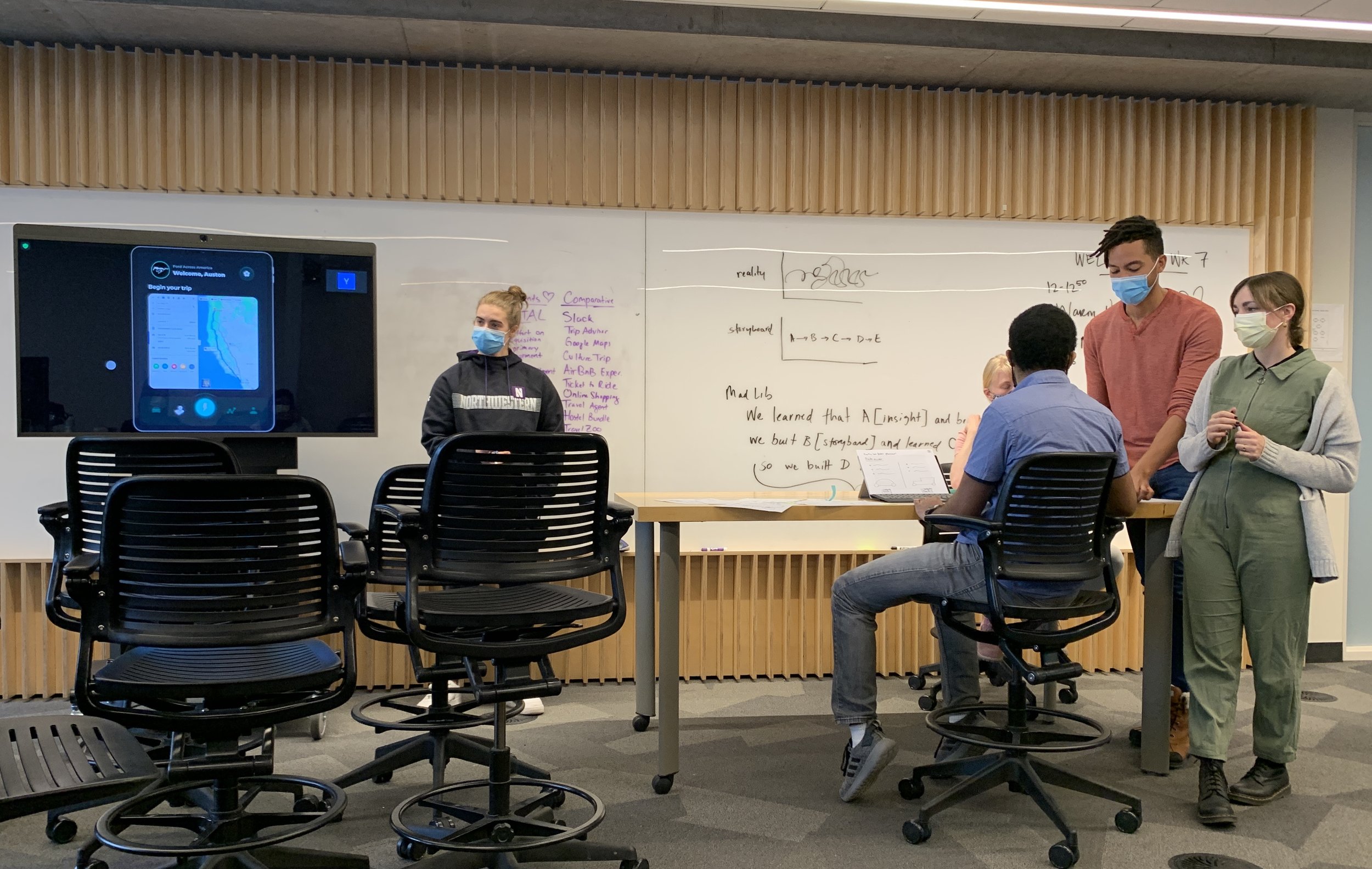
Mobil-ity
partnering with D-Ford to explore new approaches to the ways we get around
——
Project Type
service design
design research
digital experience design
Skills
problem framing
secondary research
user interviews
research synthesis: insights,
frameworks
brainstorming
prototyping: storyboards, mock-ups
(Figma), video
prototype testing: roleplay
reframing
storytelling
roadmap
client pitch
Role
project manager
research design lead
user interviews
synthesis lead
brainstorm lead
pitch visual design co-lead
pitch story design lead
The Challenge
The transportation space is ripe for innovation. With evolving modern needs, mobility offerings are transitioning in unprecedented ways. As the mobility landscape continues to shift, there are many unanswered questions and myriad opportunities for design to make an impact.
Based on real industry needs, we (a team of five) partnered with D-Ford to explore new products, services, and experiences related to new and existing opportunity spaces in the dynamic transportation space. The result?
A full cycle process of research, brainstorming, prototyping, and iterating to deliver a final concept and next steps roadmap
A snippet of the team ideating through the touchpoints of our final concept. Please note: some pictures blurred for confidentiality.
The Process
Please note that due to information concerns and an NDA agreement, the critical details of the project and problem space can’t be disclosed, therefore the emphasis will be placed on the overall process work/deliverables. After an initial briefing with the client, we began to gather around a central question.
How might we ideate new ways to solve consumer tensions in the dynamic mobility space?
In order to establish the needed context for the problem space, we began exploring through a variety of research methods: discovering through the lens of stakeholder maps, ecology research, secondary research, and existing service journey maps/blueprints. In addition to utilizing these information resources and frameworks, we set out to conduct analogous research through service excursions.
Snapshot: exploring at Chicago’s Auto Show. Excursions & immersions were just one of the ways we engaged in initial research.
Armed with secondary research, we conducted user interviews—interviewing four users across different geographies, income levels, and ethnicities to build understanding through a diverse perspective. I conducted one interview and led our team through a research synthesis —surfacing three key insights that would form the foundation for the rest of our project.
A snippet of a Mural board summarizing our findings. We gained depth by talking to users with varying viewpoints.
Using our insights and research frameworks as a guide, we began brainstorming multiple concepts through a variety of prompts. After leading my team through several rounds of ideation, we narrowed our ideas to five main concepts and set out to create storyboards.
Ideating different concept ideas to reframe our initial direction based on feedback from the users and clients.
Through multiple rounds of user feedback and synthesis, we iterated our concepts, finally landing on a design that focused on addressing consumers' concerns through a hybrid of previous ideas. In order to begin more fully prototyping touchpoints, we created a roleplay exercise that enabled us to continue to gather feedback data and iterate our final concept.
Using role play enabled us to transform our ideas into action and was pivotal to
the direction we took.
The Result
After several rounds of prototype testing, we further refined our final concept—zooming in to build out the moments that matter. With a thoughtfully, thoroughly designed final concept in hand, I led my team through compiling our narrative into a compelling presentation deck. Taking special care to highlight key moments throughout the customer journey that met both the user and business needs, we received positive feedback on our final solution.
In addition to a final presentation, video pitch, and next steps roadmap, we delivered our finalized research including journey maps, service blueprint, insights, and frameworks. The concept is now in its next steps of development with D-Ford!
lessons
Considering higher-level stakeholder needs is essential to building support for idea acceptance & implementation
Fun and productivity are not mutually exclusive. Building in fun generates extra inspiration and creativity!
Don’t just design the design, design the story too.






